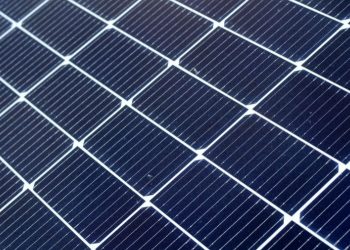Nuclear energy could soon become a reality, and the potential impact on Australia’s renewable energy industry must be explored. Australians will soon head to the polls to decide whether nuclear power should enter the energy mix. Should nuclear power stations be voted for and existing plans for renewable energy investment be relegated to the history books, what will the industry look like in the coming years?
The Coalition’s proposal to integrate nuclear power into Australia’s energy mix has sparked significant debate. This plan could profoundly impact the renewable energy sector, particularly commercial solar, wind, hydro, and residential solar. Understanding the potential effects on rebates, technology prices, and the broader economy is crucial. In the fifth and final part of our series, we’ll examine the potential impact.
The current state of Australia’s renewable energy
In 2024, Australia saw a record investment in large-scale wind and solar farms. This surge was driven by federal and state policies aiming for 82% renewable energy generation by 2030. Australia’s broader goal is to reduce carbon emissions by 43% from 2005 levels by 2030 and achieve net-zero emissions by 2050.
Renewable energy sources contributed a record share to Australia’s main electricity supply in the December 2024 quarter. Meanwhile, the contribution of coal-fired power decreased. In 2024, investments in large-scale wind and solar farms reached $9 billion. This added 4.3 gigawatts of new renewable capacity, the highest since 2018.
To support this transition, the government allocated an additional $2 billion to the Clean Energy Finance Corporation. This aims to assist households, workers, and businesses in shifting to renewable energy. The Capacity Investment Scheme, legislated in late 2023, is expected to deliver 23 gigawatts of renewable energy. It also aims to achieve 9 gigawatts of energy storage capacity.
Given these developments, Australia appears to be on track to meet its renewable energy targets by 2030. However, challenges such as the need for new transmission infrastructure, a skilled workforce, and competition for renewable components must be addressed to maintain this momentum.
The Coalition’s nuclear power proposal
The Coalition, led by Peter Dutton, plans to slow the renewable energy rollout and invest in nuclear power. They propose reactors at seven sites across Australia. They claim this approach will reduce power prices by 44%, though evidence supporting this claim is lacking. Energy experts question the feasibility of this timeline. They cite regulatory, workforce, geological, and environmental challenges, as well as existing federal and state bans on nuclear energy.
Impact on commercial solar, wind, and hydro sectors
Introducing nuclear power may delay investments in renewable energy, potentially leading to higher emissions compared to a renewables-based policy. The Clean Energy Council warns that the Coalition’s plan, which caps renewable energy at 54% by 2050, could hinder the progress of commercial solar, wind, and hydro projects. Australia is already on track to reach 48% renewable energy by the end of 2025. This cap could significantly slow the momentum of current renewable initiatives.
Impact on residential solar
Australia boasts over four million households with rooftop solar installations. The Coalition’s nuclear plan could adversely affect these households by potentially reducing incentives and support for residential solar. This shift might discourage new installations and undermine the investments of existing solar users.
Projections for rebates and incentives
Currently, the federal Small-scale Renewable Energy Scheme (SRES) provides incentives for households and small businesses to install renewable energy systems, including solar, wind, and hydro. This scheme allows for the creation of small-scale technology certificates (STCs). These can be sold or assigned to reduce installation costs.
At the state level, various programs offer additional support. For instance, Victoria’s Solar Homes Program offers rebates and interest-free loans for solar and battery installations. However, the introduction of nuclear power could lead to a reallocation of government resources. This might reduce funding for these rebates and incentives. Consequently, this shift might make renewable energy systems less affordable for consumers.
Prices of solar, batteries, EVs, and other renewable technologies
The costs of solar panels, batteries, and electric vehicles (EVs) have been declining. This is due to technological advancements and economies of scale. For example, the price of solar panels has decreased significantly over the past decade. This has made them more accessible to consumers.
However, the Coalition’s focus on nuclear power could divert investment away from renewable technologies, potentially slowing further price reductions. Additionally, uncertainties surrounding future government support for renewables might deter consumers from adopting these technologies.
Economic and employment implications
The renewable energy sector has been a significant contributor to Australia’s economy. It has created jobs and stimulated regional development. For instance, the recent surge in large-scale renewable projects has led to increased demand for skilled workers in construction, maintenance, and operations.
Transitioning to nuclear power could have mixed economic effects. The construction and operation of nuclear plants would create jobs. However, these opportunities might not materialise for several years due to the long lead times associated with nuclear projects. In contrast, renewable energy projects typically have shorter development timelines. They allow for more immediate economic benefits.
Moreover, the high costs and risks associated with nuclear power could lead to increased electricity prices. This could negatively impact both consumers and businesses. This scenario could reduce disposable income and increase operational costs for businesses. Consequently, it could potentially slow economic growth.
Conclusion
The Coalition’s proposal to integrate nuclear power into Australia’s energy mix presents several challenges for the renewable energy sector. Potential impacts include reduced support for commercial and residential renewable projects. Changes to rebates and incentives are also a concern. Additionally, there are economic implications related to employment and energy costs. Careful consideration of these factors is essential. This is to ensure Australia’s energy transition remains sustainable, affordable, and beneficial for all Australians.


















